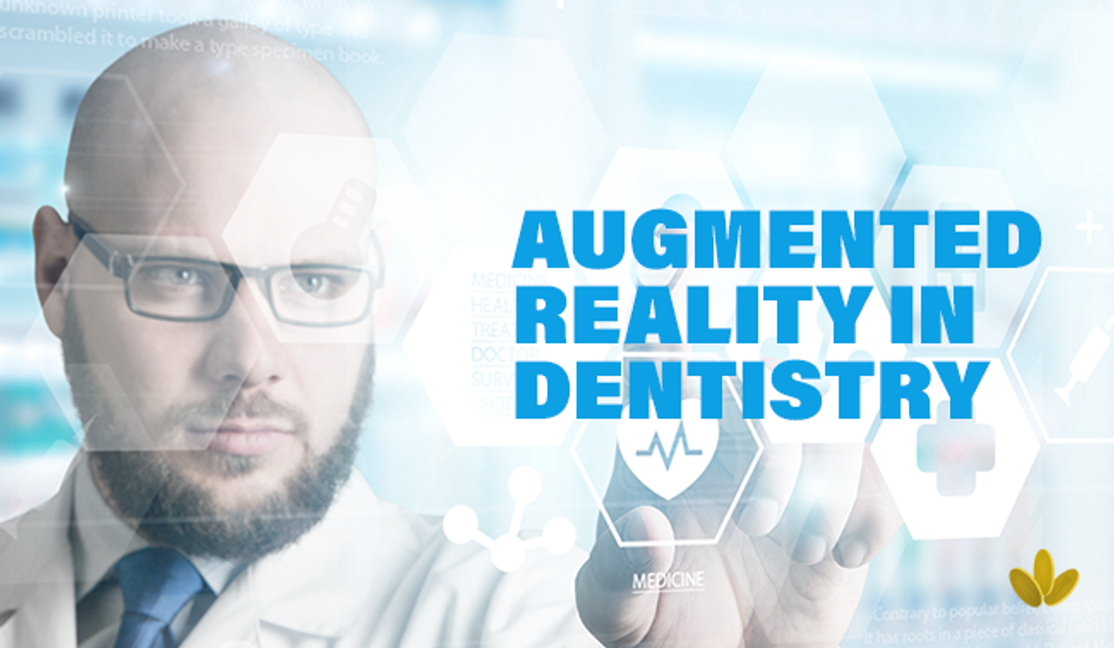Augmented Reality in Dentistry. Improving Patient Education and Communication
Posted by Oscar on 5th Jun 2023
Advancements in technology have revolutionized various industries, and the field of dentistry is no exception. With the emergence of augmented reality (AR), dentists now have a powerful tool at their disposal to enhance patient education and communication. Augmented reality blends the virtual world with the real world, providing patients with a unique and immersive experience. In this blog post, we will explore how augmented reality is transforming the dental industry, empowering dentists to better educate their patients and facilitate clearer communication.
Understanding the Difference between AR and VR
Before delving into the impact of augmented reality in dentistry, it's essential to differentiate it from virtual reality (VR). While both AR and VR technologies provide immersive experiences, they differ in their approach and level of immersion.
Virtual reality (VR) creates a fully artificial environment that users can enter and interact with through specialized headsets. VR isolates users from the real world and replaces it with a simulated environment, often using computer-generated graphics and 3D models. This technology aims to provide a complete sensory experience, transporting users to a different reality.
On the other hand, augmented reality (AR) overlays virtual elements onto the real world. AR technology enhances the user's perception of reality by superimposing digital content, such as images, videos, or 3D models, onto the user's view of the physical environment. AR applications can be accessed through smartphones, tablets, smart glasses, or other wearable devices, allowing users to interact with virtual objects while maintaining their presence in the real world.
1. Visualizing Treatment Plans
One of the significant challenges in dentistry is effectively communicating treatment plans to patients. Often, patients struggle to understand complex dental procedures, leading to confusion or even anxiety. Augmented reality bridges this gap by allowing dentists to create 3D models of a patient's oral cavity. By overlaying virtual models onto the real teeth, patients can visualize the proposed treatment plan in real-time. Whether it's orthodontic procedures, dental implants, or smile makeovers, AR technology enables patients to see the potential outcomes before committing to any treatment.
2. Enhanced Patient Education
Educating patients about oral hygiene practices and the importance of preventive care is vital for their long-term oral health. Traditional methods, such as diagrams or pamphlets, may not effectively convey the information. Augmented reality provides a more engaging and interactive way to educate patients. Dentists can use AR applications to demonstrate proper brushing techniques, show the effects of poor oral hygiene, or simulate the progression of dental diseases. By incorporating AR into patient education, dentists empower patients to take an active role in their oral health, leading to better compliance with recommended treatments and preventive measures.
3. Minimizing Patient Anxiety
Dental anxiety is a common issue faced by many patients, often resulting from the fear of the unknown. Augmented reality can significantly alleviate this anxiety by giving patients a clear understanding of what to expect during their dental procedures. Using AR, dentists can walk patients through each step of a treatment, showing them the equipment involved, the procedure itself, and even the anticipated results. This immersive experience allows patients to mentally prepare for the treatment, reducing anxiety and improving overall patient satisfaction.
4. Real-Time Chairside Assistance
During complex dental procedures, dentists may encounter challenges that require consultation or collaboration with specialists. Augmented reality enables real-time chairside assistance, where dentists can connect with experts remotely. By wearing AR-enabled glasses or using handheld devices, dentists can share live video feeds of the patient's oral cavity with specialists, allowing them to provide guidance, offer suggestions, or even virtually assist in the procedure. This collaboration enhances the quality of care and ensures optimal patient outcomes.
5. Training and Continuing Education
Augmented reality also holds great potential in dental training and continuing education. Dental students can benefit from immersive virtual experiences that simulate real-life scenarios, enabling them to practice various procedures without the need for patients. Dentists can also use AR to stay updated on the latest advancements in dentistry by attending virtual conferences or workshops. Augmented reality provides a flexible and cost-effective way to enhance professional development in the dental field.
Augmented reality is transforming the dental industry by improving patient education and communication. By visualizing treatment plans, enhancing patient education, minimizing anxiety, facilitating real-time chairside assistance, and enabling training and continuing education, AR empowers dentists to provide a more personalized and engaging experience for their patients. As technology continues to evolve, we can expect augmented reality to play an increasingly significant role in the future of dentistry, ultimately improving oral healthcare outcomes and patient satisfaction.

